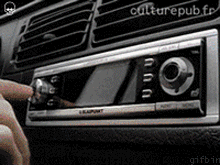Post by KeithL on Dec 8, 2017 12:54:15 GMT -5
My personal suspicion is that, while even relatively high levels of jitter produce relatively subtle audible differences, claims that low levels of jitter produce NO audible difference are somewhat exaggerated.
Also note that jitter is not "just a simple number"....
Jitter is "variations in the clock".... and can take an almost infinite number of various forms.
Therefore, if you assume "it's totally inaudible", then "what flavor of inaudible it is" becomes moot.
However, if it is audible, then you have all sorts of variations, each of which might sound slightly different.
(The obvious goal would be to reduce it to the point where it really is absolutely inaudible.... but I'm not sure we even know where that point is yet.)
The important thing to keep in mind when discussing devices which re-clock the data is that the clock is actually replaced by each one.
This means that, since the clocks earlier in the signal path are discarded, the jitter present in the signal will ONLY depend on the last device in the signal chain that re-clocks the data.
So, for example, if you use the DC-1 with the ASRC disabled, I wouldn't be surprised if the Eitr sounds slightly different than the USB input on the DC-1.
(Each has their own clock; each of which will produce small, but potentially slightly different, amounts of jitter; and the data isn't being re-clocked after that.)
However, with the ASRC enabled, I would expect little or no difference, because then you will be listening to the ASRC's clock.... both of the others having been discarded by the ASRC.
(Note that the ASRC itself introduces a certain tiny amount of error or distortion - but it's rated to be somewhere around -130 dB - and so should be really inaudible.)
Another interesting possibility is that some people might find the audible results of certain types of jitter pleasing.
(Perhaps the asynch USB input on the DC-1 sounds "flat and uninteresting" to some folks because it has too little jitter.
It's interesting to note that many people describe ultra pure filtered water the same way - as tasting "dull and lifeless".)
It might be interesting to do a study - adding significant amounts of different types of jitter - to see if everyone really likes the least jitter.
(And, if not, if certain types are considered to be "less annoying" or even "better sounding" than others.)
However, to address Garbulky's last sentence.... this would NOT be a matter for a transport to address.
(This whole discussion has been about the Eitr doing a better job of removing extra junk that sounds bad than the stock USB input does.)
However.......
The point here is that, if the DAC does it's job well, then the transport is irrelevant - as long as it can deliver the correct bits.
And, since the critical factor is that the bits and clock be as perfect as possible right where the signal enters the DAC chip, it makes sense to re-clock the signal right there.
It doesn't MATTER how good the signal is between the transport and the DAC box - ALL that matters is that it's very clean when it enters the DAC chip itself.
Since we can actually fix digital signals, and remove problems like jitter, at any point along the way, it only makes sense to do so where it really counts.

 There is nothing subtle about the improvement of inserting the Eitr into the digital chain. The audible improvement is astounding. To me. I have no interest in deciding "why," I really don't care why. It just is. There is no S/PDIF source in my office system where I'm using it, so no I did not compare that.
There is nothing subtle about the improvement of inserting the Eitr into the digital chain. The audible improvement is astounding. To me. I have no interest in deciding "why," I really don't care why. It just is. There is no S/PDIF source in my office system where I'm using it, so no I did not compare that.
Like I said in my initial comments: either the USB input in the Gungnir MB was bad (which I really do not believe) or the claims Schiit is making about the improvements offered in their Gen 5 circuit topology are true.I don't doubt what you say.
I think the reason is important. We mustn't dismiss that. What you are saying could revolutionize digital audio. Because it is improving a digital 1 and 0 signal over something that already has vanishingly low jitter.
I don't think there's anything wrong with the Gungnir circuitry either. But since there is a difference, I think it's important for digital transport technology that transports with vanishingly low jitter can still sound different. This must mean there is a measurable variable somewhere that affects audible quality. You've mentioned that several times if it can be heard it can be measured.
This must validate heroic efforts in digital transport technology which so far most people poo-pooh.
Because right now the current thinking is that if the jitter is below a surprisingly high margin, it is inaudible. Most modern dacs are well below this margin. Both the DC-1 and the Gungnir are asynchronous and I believe they both have jitter reduction/reclocking circuitry that push the signal to ridiculously low jitter. As per your Haskins quote, inaudible is inaudible. But if in this case it is audible, then this is BIG news. Not some one off thing that one company did. It applies to all of digital audio.
So what is it that the Eitr does that is revolutionizing digital audio is my question? Because I would want that in a transport.
Unless, one is imagining the difference, which I don't think you are .
Also note that jitter is not "just a simple number"....
Jitter is "variations in the clock".... and can take an almost infinite number of various forms.
Therefore, if you assume "it's totally inaudible", then "what flavor of inaudible it is" becomes moot.
However, if it is audible, then you have all sorts of variations, each of which might sound slightly different.
(The obvious goal would be to reduce it to the point where it really is absolutely inaudible.... but I'm not sure we even know where that point is yet.)
The important thing to keep in mind when discussing devices which re-clock the data is that the clock is actually replaced by each one.
This means that, since the clocks earlier in the signal path are discarded, the jitter present in the signal will ONLY depend on the last device in the signal chain that re-clocks the data.
So, for example, if you use the DC-1 with the ASRC disabled, I wouldn't be surprised if the Eitr sounds slightly different than the USB input on the DC-1.
(Each has their own clock; each of which will produce small, but potentially slightly different, amounts of jitter; and the data isn't being re-clocked after that.)
However, with the ASRC enabled, I would expect little or no difference, because then you will be listening to the ASRC's clock.... both of the others having been discarded by the ASRC.
(Note that the ASRC itself introduces a certain tiny amount of error or distortion - but it's rated to be somewhere around -130 dB - and so should be really inaudible.)
Another interesting possibility is that some people might find the audible results of certain types of jitter pleasing.
(Perhaps the asynch USB input on the DC-1 sounds "flat and uninteresting" to some folks because it has too little jitter.
It's interesting to note that many people describe ultra pure filtered water the same way - as tasting "dull and lifeless".)
It might be interesting to do a study - adding significant amounts of different types of jitter - to see if everyone really likes the least jitter.
(And, if not, if certain types are considered to be "less annoying" or even "better sounding" than others.)
However, to address Garbulky's last sentence.... this would NOT be a matter for a transport to address.
(This whole discussion has been about the Eitr doing a better job of removing extra junk that sounds bad than the stock USB input does.)
However.......
The point here is that, if the DAC does it's job well, then the transport is irrelevant - as long as it can deliver the correct bits.
And, since the critical factor is that the bits and clock be as perfect as possible right where the signal enters the DAC chip, it makes sense to re-clock the signal right there.
It doesn't MATTER how good the signal is between the transport and the DAC box - ALL that matters is that it's very clean when it enters the DAC chip itself.
Since we can actually fix digital signals, and remove problems like jitter, at any point along the way, it only makes sense to do so where it really counts.
Like I said in my initial comments: either the USB input in the Gungnir MB was bad (which I really do not believe) or the claims Schiit is making about the improvements offered in their Gen 5 circuit topology are true.
I think the reason is important. We mustn't dismiss that. What you are saying could revolutionize digital audio. Because it is improving a digital 1 and 0 signal over something that already has vanishingly low jitter.
I don't think there's anything wrong with the Gungnir circuitry either. But since there is a difference, I think it's important for digital transport technology that transports with vanishingly low jitter can still sound different. This must mean there is a measurable variable somewhere that affects audible quality. You've mentioned that several times if it can be heard it can be measured.
This must validate heroic efforts in digital transport technology which so far most people poo-pooh.
Because right now the current thinking is that if the jitter is below a surprisingly high margin, it is inaudible. Most modern dacs are well below this margin. Both the DC-1 and the Gungnir are asynchronous and I believe they both have jitter reduction/reclocking circuitry that push the signal to ridiculously low jitter. As per your Haskins quote, inaudible is inaudible. But if in this case it is audible, then this is BIG news. Not some one off thing that one company did. It applies to all of digital audio.
So what is it that the Eitr does that is revolutionizing digital audio is my question? Because I would want that in a transport.
Unless, one is imagining the difference, which I don't think you are .





